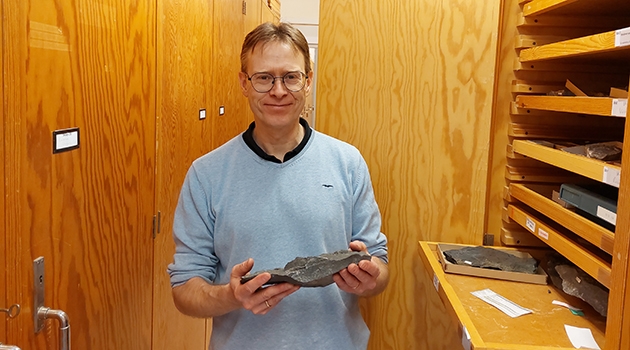“Without Otto Zdansky, this museum in Uppsala wouldn’t have existed”
Hello, Jan Ove R. Ebbestad, Curator of the Museum of Evolution. You and Jan Romgard co-wrote the book Otto Zdansky: The scientist who discovered Peking Man and explored China’s fossil past, about the palaeontologist Otto Zdansky, who discovered Peking Man. Who was Otto Zdansky?
“He arrived in Uppsala as a young student on an exchange with Austria after the First World War. Carl Wiman, who was a leader in Swedish research on vertebrate palaeontology, was just embarking on his collaboration with China at the time, and needed a knowledgeable researcher to go and head the major project of collecting fossils. Zdansky had no paid position; he’d obtained his PhD, but wasn’t salaried. All the same, he was aware that he had to get tenure, so he decided to study and describe the fossil he found, to make a career for himself, and succeeded. When he found a tooth that might have come from a hominin (a relative of Homo sapiens), he put it in his pocket.
“That tooth was the first Peking Man find. It was a period when everyone was looking for human origins in Asia, so he grasped what a big deal the tooth was, and wanted to study it first. After China, Zdansky returned to Uppsala in 1924–26 but still gained no paid position, so he went to Egypt. There, he became a professor and set up research in palaeontology and geology at Cairo University.”
Why did you write the book?
“Those of us who work on the collections at the Museum of Evolution became curious about the historical figures responsible for them. I’d heard such a lot about Otto Zdansky and Peking Man. I wanted to hear the whole story and why he went to China.”
What has he meant for science?
“He didn’t get scientific recognition in his lifetime, but he laid the foundations for studies of fossils in China’s Hipparion fauna. Think of the animals in the Serengeti today. The Hipparion fauna were the fossil equivalent, spread throughout the whole of Eurasia and Africa between about 23 million and 800,000 years ago. Through Zdansky’s pioneering work on and detailed descriptions of that stunning fossil diversity, he paved the way for future research on Peking Man. During the three years he spent in China, he sent 800 wooden crates of fossils to Uppsala. Without the material he collected, we wouldn’t have a palaeontogical museum in Uppsala today.”
Is there still some material left to discover in the contents of those crates?
“In 2011, we went through various crates that hadn’t been discovered before, and found another tooth from Peking Man. So yes, it is possible to turn up undiscovered finds. They’re lying there for future research. The material is unique worldwide and, in scientific terms, it’s invaluable. It’s type and reference material that we have an obligation to keep accessible to all researchers.”
Åsa Malmberg
Facts about the book:
Book cover: Jan Ove R. Ebbestad and Jan Romgard
Otto Zdansky: The scientist who discovered Peking Man and explored China’s fossil past
Uppsala: Acta Universitatis Upsaliensis, 2021, 248 pp.

